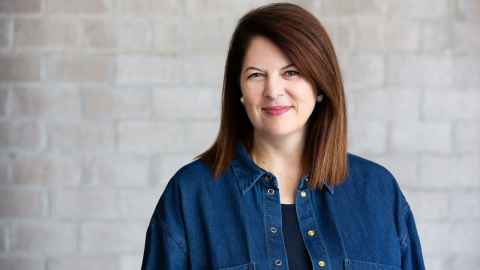A very 21st century design degree
3 May 2019
How can we prepare designers to tackle the big global issues of our time, for jobs that don’t yet exist and technologies that have yet to be invented?

These are the questions Associate Professor Deb Polson, head of the new Design programme at the University of Auckland has been grappling with, and which have informed the way she has shaped the new, contemporary and innovative degree.
As she predicts sustainability will be an increasingly crucial aspect of contemporary design, she has developed a programme in which projects will be aligned with the UN’s 17 Sustainable Development Goals (SDGs).
“I think we’ve put enough bad designs in the stomachs of whales,” she says.
“Also, I’ve sat on numerous panels, for people seeking funding for start-ups, and what attracts funding today are projects that have considered ethical factors.”
Such as those that can demonstrate innovative and more sustainable production methods, for instance, or have used local products, or provided revenue for indigenous communities.
“Every project that the UN will fund has to fit one of these 17 goals, and I’m going to do the same. It will require students to think about these Goals, and they’ll be assessed on how they respond to them.”
Designing for the present and the future will also require adapting to ever-changing technologies. Before joining the University of Auckland Assoc Prof Polson founded HUB Studio, a Design Innovation Lab at the Queensland University of Technology (QUT).
She has extensive experience in a range of technologies. Her own research has included creating a Virtual Fashion Studio, a series of works that combined virtual garment processing and body motion capture technologies for Queen Street Mall, Brisbane.
She also worked with Plant & Food in New Zealand, to develop a game in which children could create their own kind of futuristic fruit in a “virtual biolab”. Later she worked with a material scientist and nutritionist so players could send their fruit designs from the virtual world to a 3D printer that prints their unique fruit in an edible material containing nutrients.
“In the 1990s everyone needed a webpage. In the 2010s they wanted an app, and now it’s about virtual and augmented reality. Designers no longer do stuff just for print or product; the new designer is a different beast. They need to be adaptable, and work across myriad platforms. “
The role of the designer is changing and expanding, which is reflected in the new job titles. “Being a designer now might mean being an ‘experience designer’, or ‘service designer’ or a ‘creative technologist’. These are relatively new roles, and they are paid very well.”
Design, she says, is not about responding to the brief, but creating it and designers who can come up with creative solutions for complex and contemporary problems across a range of industries, will be in great demand.
This is why the programme designed so that it can be done as a conjoint degree, with Advanced Science (Honours), Arts, Commerce, Engineering, Global Studies, Health Sciences, Law, Music, Property and Science.
Assoc. Prof. Polson had aligned the Design programme with the United Nations’ SDGs when the University of Auckland was ranked No. 1 globally in the inaugural University Impact Rankings by Times Higher Education (THE), which measures how universities worldwide are performing against the United Nations’ SDGs.
Having arrived in Auckland from Queensland only this year, she says, “when I heard that, I knew that I was in the right place.”
Margo White I Media adviser
DDI 09 923 5504
Mob 021 926 408
Email margo.white@auckland.ac.nz